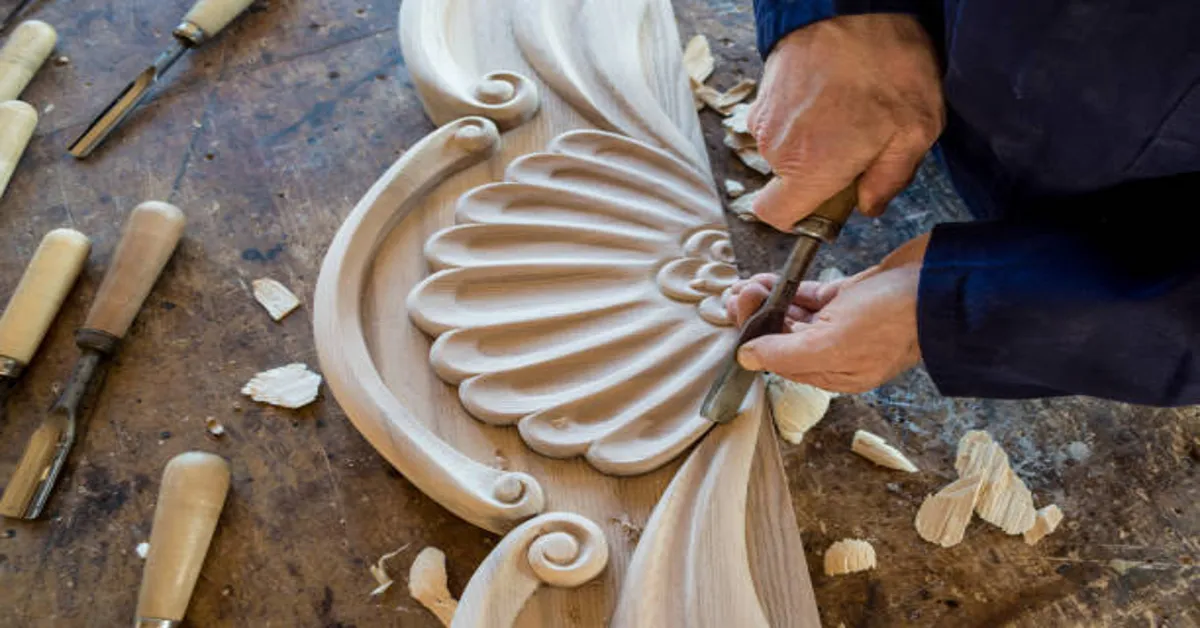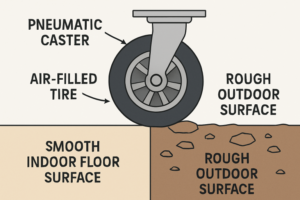Woodworking in Victoria is more than a craft—it’s a cultural expression that bridges traditional craftsmanship with contemporary innovation. Rooted in centuries of practice, this woodworking culture extends across generations and styles, thriving in both rural workshops and urban studios. This article dives deep into what makes Victoria woodworking unique, exploring its historical roots, local timber varieties, craftsmanship techniques, styles, tools, and the thriving community that keeps this art alive today.
A Historical Perspective of Woodworking in Victoria
The woodworking tradition in Victoria began long before industrial tools became commonplace. Initially practiced by early settlers using hand tools, the craft was essential for building infrastructure, homes, furniture, wagons, and farm equipment. The abundance of native hardwood forests provided a rich supply of high-quality timber like Mountain Ash, Blackwood, and Jarrah. Over time, woodworking evolved from necessity to artistry, with Victorian-era styles introducing elaborate carvings, turned legs, and inlaid patterns.
During the gold rush era in the 1850s, a rapid increase in population led to an architectural boom, and demand for skilled woodworkers skyrocketed. Grand public buildings, churches, and mansions were adorned with intricate wooden interiors, often handcrafted by artisans brought in from Europe. This period left a significant legacy still visible in many of Victoria’s heritage buildings.
Post-World War II saw a shift in Victoria woodworking culture. With the arrival of mass-produced furniture and synthetic materials, traditional woodworking declined briefly. However, the late 20th and early 21st centuries brought about a revival. Consumers began to appreciate the character, durability, and sustainability of handcrafted wood products once again, igniting a new wave of woodworking enthusiasm in Victoria.
Local Timber Varieties Used in Victorian Woodworking
One of the defining characteristics of Victoria woodworking is the use of native Australian hardwoods. The region boasts a diverse range of timbers, each with unique qualities that influence the aesthetic and structural properties of finished products.
Mountain Ash (Eucalyptus regnans)
Common in the mountain ranges of the Victorian Alps, Mountain Ash is one of the tallest tree species in the world. It provides a pale, straight-grained timber that is ideal for structural applications, cabinetry, and fine furniture. Its strength and workability make it a favorite among both traditional and modern woodworkers.
Blackwood (Acacia melanoxylon)
Found in the Otways and coastal regions, Blackwood is a premium hardwood known for its rich, dark brown tones and decorative grain patterns. It’s used extensively in fine furniture, musical instruments, and veneer applications. Blackwood’s stability and elegant appearance make it a staple for high-end wood projects.
Jarrah (Eucalyptus marginata)
Though more commonly associated with Western Australia, Jarrah is also used in Victoria due to its exceptional durability. Its deep red hues and high resistance to decay make it suitable for outdoor furniture, decking, and flooring.
Red Gum (Eucalyptus camaldulensis)
A robust and dense timber often used for structural applications, Red Gum is known for its striking color variation from pale pinks to deep reds. Its density makes it harder to work with, but the final results are often stunning and long-lasting.
Messmate and Tasmanian Oak
These versatile timbers are often used in flooring, paneling, and furniture. With light tones and subtle grains, they suit contemporary design aesthetics. They’re also environmentally friendly choices due to their sustainable harvesting.
Core Woodworking Techniques in Victoria
Victoria’s woodworking culture integrates a variety of traditional and modern techniques. Craftsmen and hobbyists alike employ skills that range from basic joinery to intricate carving and CNC machining.
Hand Joinery
Classic joints like dovetails, mortise and tenon, and lap joints are still widely used, especially among furniture makers. These joints reflect precision and strength, characteristics valued by both artisans and clients.
Turning and Carving
Woodturning remains popular, especially in regional towns where lathe work is used to make bowls, balusters, and table legs. Hand carving, on the other hand, appeals to artists looking to create decorative features in wood—especially in restorations or bespoke furniture.
Laminating and Bending
Modern furniture designs often require curves and unusual shapes, which are achieved using lamination and steam-bending techniques. These allow woodworkers to mold timber into ergonomic forms without compromising strength.
Machining and CNC Routing
Technology has had a profound impact on woodworking. Many workshops in Victoria are equipped with CNC routers and laser cutters, which enhance precision and efficiency in design and fabrication. This marriage of tradition and innovation is especially prominent in urban makerspaces.
Finishing Techniques
The final aesthetic of a woodworking project depends greatly on the finish. Victorian artisans use oiling, waxing, staining, and polyurethane coatings to highlight natural grains while protecting the wood. Eco-friendly finishes are increasingly popular as sustainability becomes a stronger value in the woodworking community.
Popular Woodworking Styles in Victoria
The styles adopted in Victoria reflect both historical influences and modern trends. The diversity in design is a testament to the region’s multicultural heritage and environmental awareness.
Victorian-Era Style
Inspired by 19th-century British design, this style is characterized by ornate details, curved legs, inlays, and a focus on symmetry. You’ll often see these features in heirloom furniture, heritage restorations, and public buildings.
Contemporary and Minimalist Design
Many modern designers favor clean lines, open grains, and natural finishes. The use of light-toned woods like Tasmanian Oak and Messmate complements the minimalist aesthetics often seen in Melbourne homes and architecture.
Rustic and Reclaimed Wood Style
A growing trend in Victoria is the use of reclaimed timber from old barns, wharves, and railway sleepers. These woods are rich in character and offer a sustainable alternative to new timber. The rustic style embraces imperfections, knots, and aged textures, creating warm and earthy pieces.
Scandinavian Influence
Victoria’s design community often draws from Scandinavian woodworking for its emphasis on simplicity, functionality, and natural materials. This style is especially prevalent in flat-pack furniture, light fixtures, and kitchenware.
Tools of the Trade: Traditional and Modern
Victoria woodworking integrates a wide range of tools, from classic hand tools passed down through generations to sophisticated machinery.
Essential Hand Tools
These include chisels, hand planes, saws, mallets, marking gauges, and rasps. They are essential for fine joinery, fitting, and shaping.
Power Tools and Machinery
Table saws, band saws, planers, jointers, and routers are standard in most workshops. These tools increase productivity while allowing precision and repeatability.
CNC and Laser Machines
Computer-aided manufacturing tools allow for complex cuts, engraving, and mass production without sacrificing detail. These machines are frequently used by custom furniture makers, sign-makers, and cabinetry businesses.
Safety Equipment
Dust extractors, goggles, hearing protection, and proper ventilation are vital in any woodworking environment. Many woodworkers in Victoria also opt for low-toxicity adhesives and finishes to protect both their health and the environment.
Woodworking Education and Community in Victoria
The woodworking community in Victoria is vibrant and collaborative. Whether you’re a beginner or an experienced artisan, there’s always something to learn or share.
Woodworking Schools and Courses
Institutions like the Melbourne School of Fine Woodworking and various TAFEs offer courses ranging from weekend workshops to full-time certifications. Subjects include furniture design, cabinetmaking, woodturning, and finishing techniques.
Community Workshops and Makerspaces
Spaces like Fab9 in Footscray or Makerspaces in Castlemaine provide access to tools, mentorship, and a creative community. These hubs are ideal for individuals who lack personal workshops but wish to explore woodworking.
Craft Markets and Exhibitions
Events such as the Melbourne Timber & Working with Wood Show, Craft Victoria exhibitions, and local markets allow woodworkers to showcase their work, connect with peers, and engage with customers.
Online Forums and Social Media
A strong online presence complements the physical woodworking community. Social platforms and forums serve as spaces for sharing techniques, troubleshooting, and showcasing projects.
Sustainability in Victorian Woodworking
Environmental responsibility is increasingly at the heart of woodworking practices in Victoria. Many artisans and businesses prioritize sustainable timber sourcing, use reclaimed wood, and reduce waste through efficient design.
Certified timbers from sustainably managed forests are preferred, and offcuts are often reused for smaller products like cutting boards, toys, and jewelry. Water-based finishes and biodegradable adhesives further reduce the ecological footprint.
Several organizations promote sustainability in woodworking, including the Forest Stewardship Council (FSC) and Responsible Wood Australia. Workshops and consumers are encouraged to choose products bearing certifications and to support local timber industries.
Business Opportunities and Challenges
While woodworking is a fulfilling craft, it also presents business opportunities—especially in custom furniture, cabinetry, and architectural detailing. Victoria’s growing appreciation for handmade and bespoke design offers a fertile ground for artisan brands.
However, challenges include competition from mass-produced imports, fluctuating timber prices, and the high cost of setting up a professional workshop. Successful businesses often thrive by focusing on quality, storytelling, and personalized service.
E-commerce and digital marketing have become vital tools for local woodworkers. Platforms like Etsy, Instagram, and locally hosted websites provide global reach and showcase portfolios that reflect the personality and skills of the maker.
The Future of Victoria woodworking
The future of Victoria woodworking looks promising. There is a strong return to craftsmanship, driven by a collective desire for sustainability, authenticity, and local production. Innovations in materials, design software, and fabrication techniques continue to broaden creative possibilities.
Youth involvement through education programs and apprenticeships is helping to sustain the trade, while older generations pass on invaluable knowledge. Hybrid models—combining manual craftsmanship with automated precision—are becoming the new norm.
Whether it’s a one-of-a-kind rocking chair, a handcrafted kitchen, or a timber-clad public space, woodworking continues to shape Victoria’s physical and cultural landscape in meaningful ways.
ALSO READ: Understanding “Madalad”: The Power and Impact of Frequent Habits in Our Lives
Frequently Asked Questions (FAQs)
1. What types of wood are commonly used in Victoria woodworking?
Common timbers include Mountain Ash, Blackwood, Jarrah, Red Gum, Messmate, and Tasmanian Oak. These are chosen for their durability, appearance, and local availability.
2. Are there woodworking courses available in Victoria for beginners?
Yes, many TAFEs and private schools offer beginner-friendly woodworking courses. Community makerspaces also provide casual classes and tool access.
3. Is Victoria woodworking environmentally sustainable?
Yes, many woodworkers prioritize sustainable practices by using reclaimed wood, eco-friendly finishes, and certified timbers from managed forests.
4. What are popular styles in Victoria woodworking today?
Styles range from traditional Victorian and rustic reclaimed wood to modern minimalist and Scandinavian-inspired designs.
5. How can I sell my woodworking products in Victoria?
You can sell through local markets, craft fairs, boutique stores, or online platforms like Etsy and Instagram. Building a strong brand and story is key.









